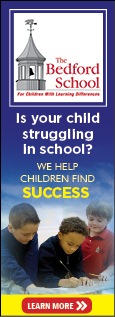Tackling the Bully Problem
How Atlanta Schools Deal with the Issue
 2>
2>
By Laura Raines
The educational experience is constantly changing, as technology
and teaching methods evolve. But one aspect of school life remains as present as reading, writing and arithmetic—bullying. It’s a problem that torments many children, and can have long-lasting effects long beyond a child’s school years. Fortunately, public and independent Atlanta schools have procedures in place to deal with the issue, and aim to tackle the problem through their curricula as well.What Is Bullying?
About 20 percent of U.S. high school students reported being bullied in school in 2021, according to the Centers for Disease Control and Prevention. Bullying continues to make the news—and awareness is critical, says Maurice Granger, coordinator of student discipline for Atlanta Public Schools (APS).
“We have to make sure that students, parents and all stakeholders are aware of bullying and of the impact bullying has on our community at large,” he said. “Through awareness, we’ve learned we can intervene and therefore decrease the number of bullying incidences we have by teaching individuals who learn from their behavior.”
Attacking the problem begins with having a clear definition. The website StopBullying.gov defines bullying as “unwanted, aggressive behavior among school-aged children that involves a real or perceived power imbalance.” Examples of bullying include making threats, spreading rumors and either verbal or physical abuse.
The website also provides information on bullying warning signs and how parents and educators can help prevent bullying.
APS has a zero-tolerance policy regarding bullying, from its board of education to its code of conduct, which is included in its student handbook. “It makes it very clear that bullying will not be tolerated and there will be consequences for bullying,” Granger said. “There are consequences ranging from one day of out-ofschool suspension to expulsion.”
APS maintains an anti-bullying page on its website, with multiple resources for students, teachers and parents. Last year the district added to its website a code of conduct video, which it also shows students in class. The video includes bullying scenarios to educate them on the issue.
The Georgia Department of Education’s website (doe.org) has a webpage devoted to bullying prevention. It includes information on the state’s bullying law plus bullying prevention resources, which includes links to other helpful websites.
Teaching Positive Behaviors
Curtailing negative behaviors is necessary, but educators are finding that teaching positive behaviors and creating inclusive, supporting school environments can make a bigger impact.
About 250 metro Atlanta public and independent schools have adopted No Place for Hate campaigns, sponsored by the Anti-Defamation League (ADL). Melissa Licali, associate director of No Place for Hate for the ADL’s Southern division, which includes Georgia, said any K-12 school can sign up for the campaign, which is free. She said the key to the campaign’s suc cess is it addresses bullying or cyberbullying “through the lens of identity and bias,” adding it focuses on “the root of bullying and not just the behaviors or the symptoms.”
“We were able to look at (each school) and ask, ‘Why is this student doing this to another student?’” Licali said. “We can always look at bullying as a piece of identity, whether it’s ableism, race or ethnicity, maybe physical appearance. I know a lot of our data is anecdotal, and at the school I was in, we saw our bullying incidents decrease, we saw more student engagement and teachers were getting more valuable time back because students were now self-directing.”
The ADL’s website (adl.org) provides information on bullying and cyberbullying statistics and statutes, resources for educators and administrators and resources for both students and families/caregivers.
The Ambassadors 4 Kids Club (a4kclub.org), an Atlanta-based organization, partners with schools across the country to prevent and stop bullying and other forms of abuse in schools and communities. It offers students the chance to start clubs at their schools, where they can take the pledge to stand up to and speak out against bullying and other forms of violence.
Teaching responsibility and respect for others begins early at Johns Creek Montessori School of Georgia, where students range in age from 15 months to 6 years old. As a result, the school has no bullying issues because of its preventative measures, including teaching conflictresolution skills.
“I think the hallmark is respect for the child,” said Debra Markham, the school’s director, referring to Montessori school founder Maria Montessori’s teachings. “One of Maria Montessori’s biggest inspirations was the idea that children have a great capacity for learning if you prepare their environment. . . . The classroom is designed and set up so the children can learn in every function of the classroom, not just academics. . . . They’re taught how to care for themselves.”
The Lovett School also believes that creating the right school atmosphere is most important. It has a no-tolerance policy and addresses any reports of bullying. Every student also signs a character pledge that says he will honor the values of honesty, respect, responsibility and compassion. And counselors visit classes regularly for guidance sessions. “In kindergarten, we talk about valuing the differences in others,” says Gayle Greenwood, director of lower school counseling. “In fourth and fifth grades, when peer pressure kicks in, we discuss what it means to be a friend.”
In middle school, counselors meet with sixth-grade boys and girls separately in small groups to address bullying, body image and online etiquette. “The point is to get them thinking and talking to each other about topics that are important to them,” says middle school counselor Sara Friedman.
Character and values are also reinforced in class through book discussions, papers and projects. “Anti-bullying can’t just be a sign or a slogan,” says counselor Chase Jones. “It has to be in the fabric of your school culture.”
What Parents Can Do About Bullying
- If you suspect your child is being bullied, ask him—he may not volunteer the information.
- Look for warning signs. He may show decreased interest in school, have angry outbursts or even hurt himself.
- If he tells you he’s being bullied, listen calmly, without getting upset, and offer your support.
- Help him figure out appropriate responses to the bullying behavior. It’s important that he feel as if he’s handling the problem himself, rather than you “solving” it for him.
- If the bullying behavior is severe enough, contact the child’s teacher, counselor or principal and work with them to determine what next steps may need to be taken.










